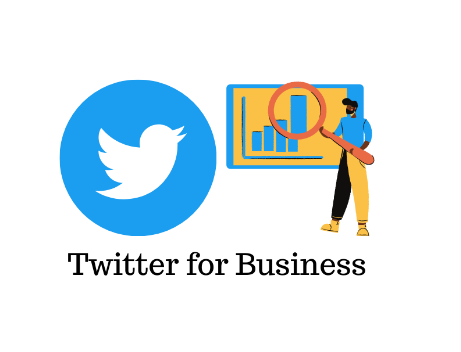News organizations are scrambling to adapt to the latest schism in the long-fractious relationship between publishers and internet platforms.
Campbell Brown, Facebook’s senior news executive, announced her departure earlier this month. Twitter, now known as X, later eliminated headlines from its platform. Instagram’s Threads app’s head, an X competitor, reaffirmed that his social network will not promote news. Even Google, which has been the most dependable partner to news organizations over the last decade, has become less dependable, making publishers concerned of their reliance on the search giant. In two recent team reorganizations, the business laid off news employees, and some publishers report Google traffic has dwindled.

If it wasn’t obvious before, it is now: the big web platforms are collapsing with news. Some of the biggest internet leaders, such as Instagram’s Adam Mosseri, have stated unequivocally that providing news on their services is often more hassle than it’s worth because it sparks passionate disputes. Others, such as Elon Musk, the owner of X, have shown contempt for the mainstream media. Publishers appear resigned to the fact that traffic from the big tech giants will never return to pre-crisis levels.
Even in the long-troubled relationship between publishers and internet platforms, the latest schism stands out, and the implications for the news industry are dire. Many news organizations have battled to thrive since tech companies upended the industry’s business model more than a decade ago. Traffic—and, by implication, advertising—from sites like Facebook and Twitter provided one lifeline.

That traffic has now vanished. According to Similarweb, a data and analytics business, top news sites in the United States received roughly 11.5 percent of their web traffic from social networks in September 2020. It had fallen to 6.5 percent by September of this year.
“The disruption to an already difficult business model is real,” The Atlantic’s executive editor Adrienne LaFrance said in an interview. Ms. LaFrance highlighted that, while social traffic has always had ups and downs, the decline in the last 12 to 18 months has been more severe than most publishers anticipated. “This is a post-social web,” she went on to say.

Meta, which owns Facebook, Instagram, and Threads, declined to comment. Elon Musk and a representative for X’s CEO, Linda Yaccarino, did not respond to requests for comment. Google’s vice president of global news partnerships, Jaffer Zaidi, stated in a statement that the company remains committed to “sending valuable traffic to publishers and supporting a healthy, open web.”
It wasn’t always like this. Businesses like Google, Facebook, and Twitter embraced journalism during the rise of the consumer internet around 20 years ago, and pieces from traditional media businesses appeared on their platforms. Fnew”Every internet platform has a responsibility to try to help fund and form partnerships to support news,” Facebook founder Mark Zuckerberg remarked in an interview with News Corp’s CEO several years ago, when Mr. Zuckerberg was still courting publishers.

Facebook and Twitter have experimented with initiatives to boost news on their platforms. For example, in 2019, Facebook unveiled Facebook News, a button that allows readers to find news content from partner newspapers that it has paid for. Twitter also experimented with collaborations, joining forces with The Associated Press and Reuters in 2021 to combat disinformation.
These efforts, however, were short-lived. Facebook News is no longer available, and Ms. Brown, the executive in charge of the news initiatives, has announced her resignation. Since Mr. Musk purchased Twitter over a year ago, he has implemented modifications to the site that de-emphasize conventional media, such as not showing headlines on articles in posts and removing the “verified” blue check mark from journalists and public figures who did not pay for it. Platforms like as TikTok, Snapchat and Instagram generate negligible traffic numbers to media outlets.
Over the last two years, all news publishers have seen a steep fall in referral traffic from social media sites. According to a recording of a September staff meeting acquired by The Times, the Wall Street Journal observed a drop approximately 18 months ago. “We are at the mercy of social algorithms and tech giants for much of our distribution,” Emma Tucker, The Journal’s editor in chief, told the newsroom during the meeting.
Web traffic, according to Ben Smith, the editor in chief of Semafor and a former media columnist for The Times, is no longer “the god metric in digital media.” He stated that intermediate platforms such as SmartNews, Apple News, and Flipboard were becoming more significant to publishers as readers sought authoritative journalism as well as the option of different sources. “People do like having lots of sources of information, but they don’t want to be nosing around a postapocalyptic wasteland to find them,” Mr. Smith went on to say.
Publishers have been more reliant on Google as Meta and X have become less reliable. For more than two decades, large and small publishers have packed their material to rank highly in Google’s search results, a strategy known as search engine optimization. Creating secondary headlines to simulate typical Google user inquiries, populating articles with links to other sites, and retaining teams of people to drive traffic and remain up to date on search engine changes are all part of these fully interwoven operations.
Google claims that its search engine sends 24 billion clicks every month, or 9,000 per second, to news publishers’ websites. While The Los Angeles Times receives a somewhat higher share of traffic from internet searches (50 to 60 percent, up from 30 to 40 percent), it is not compensating for social media losses, according to Samantha Melbourneweaver, assistant managing editor for audience.
But even Google is in doubt. According to two people from different big media outlets, several publishers have experienced a decrease in Google referral traffic in recent weeks. Though Google is still by far the most important referral traffic source for publishers, others are afraid that the reduction is a sign of things to come.
“It’s volatile,” added Ms. Melbourneweaver. “Google exists for Google’s needs, rather than for ours.” Google lay off several employees of its news partnership team in September, and the Alphabet people Union reported this week that it laid off up to 45 people from its Google News team. (Google News layoffs were first reported by The Information, a tech news website.)
“We’ve made some internal changes to streamline our organization,” said Jenn Crider, a Google spokeswoman. The news partnership team was formed to forge agreements and partnerships with publishers, and over time it introduced programs to train newsrooms, support the development of news products, and respond to governments around the world that have pressed Google to share more revenue with news organizations.
Mr. Zaidi stated in an internal memo that the team would take on a variety of tasks. “We had to make some difficult decisions to better position our team for what lies ahead,” he said in a statement. Google has been on an A.I. push all year, unveiling an A.I. chatbot called Bard in March and giving a version of its search engine that can generate explanations, poetry, and prose above standard web results to some users in May. News companies have voiced fear that these A.I. systems, which can answer consumers’ questions without requiring them to click a link, may one day reduce traffic to their websites.
A lot of publishers have privately explored what a post-Google traffic future would look like, and how to better prepare if Google’s A.I. products become more popular and bury links to news publications even deeper.According to Ms. LaFrance, The Atlantic is promoting branded newsletters, its home page, and its print magazine. According to the corporation, The Atlantic had more than 925,000 paying members across its print and digital platforms at the end of June, a 10% rise over the previous year.
“Direct connections to your readership are obviously important,” said Ms. LaFrance. “We as humans and readers should not be going only to three all-powerful, attention-consuming megaplatforms to make us curious and informed.” She went on to say, “In a way, this decline of the social web — it’s extraordinarily liberating.”
Click here to learn more about silicon valley
image source: google




































